 Your new post is loading...
 Your new post is loading...
New research from Accenture finds retailers must significantly enhance their mobile and in-store shopping experiences to match the way shoppers want to deal with retailers across multiple sales channels.
According to a survey of 750 U.S. consumers, 32 percent said the biggest improvement retailers need to make in the shopping experience is to enable the use of all three sales channels — physical store, online and mobile — in an integrated way. Yet a separate analysis of 32 major retailers found tablet and mobile phone users are able to start shopping on their devices and complete the cycle in-store with only 22 and 19 percent of retailers, respectively....
When was the last time you paid the full retail price? According to a recent article in The Wall Street Journal (Attention, ‘Discount Junkies’) about 15% of shoppers generally pay full price for items and don’t bother searching for sales. At the other extreme, a fifth of online shoppers are considered true “discount junkies,” people who make purchases only when offered discounts.
Discount shoppers are clearly reluctant to spend on premium brands if value is missing. In fact, in C. Britt Beemer and Robert L. Shook’s book “It Takes a Prophet to Make a Profit: 15 Trends that are Reshaping American Business” published back in January 2001, Trend 6 states:“Consumers Are Reluctant to Pay Full Retail Price”
Their research showed that more than 85 percent of all consumers in America shop for merchandise on sale. For those who pay full retail, 44 percent said they did so because they didn’t have time to shop. In addition, they discovered....
Shoppers today are overwhelmed with choice. Wherever they go they are overloaded with information, forced to choose between competing offers at almost every hour of the day.
But if vendors are offering all this extra choice to increase buyer satisfaction, they might well be making a mistake. Neuroscientists believe that increasing the comparisons available may actually reduce happiness, for the simple reason that people tend to regret the decision they made because of the additional options they couldn’t pick....
According to the BloomReach study, which involved 1,000 UK consumers and 122 UK online retailers, a third (34%) of retailers believe brand reputation to be the most important factor for consumers deciding on a retailer.
Just 2% of the online retailers believe a personalized shopping experience was an important factor.
However, the view from consumers was remarkably different. Personalized shopping experiences, such as product recommendations and personalized content, were more likely to persuade 31% of consumers to make a purchase.
Furthermore, a significant 85% of consumers said brand reputation was not an important factor....
The retail industry is hiding behind the showrooming threat, but the real problems may run deeper.shopping at a store, isn't really the huge threat to traditional retail that it is made out to be.
The ravages of showrooming may in fact be more reflective of traditional retailers failing to provide a good service or experience.
In a new BI Intelligence study on "reverse showrooming" — online research that leads to in-store purchases — we discovered plenty of data suggesting that shoppers often prefer to shop in-store, if the right barriers are removed. Here's what the evidence suggests about what really drives people away from shopping in-store....
A study of the free shopping apps in the Android Play store shows that the most popular apps fall into the broad categories that one would reasonably expect without pushing the limits of imagination: pure play e-commerce, brick-and-mortar retailer apps, coupons & deals, utilities (shopping lists, product scans, loyalty storage) and rewards for shopping behavior [see list at bottom of post]. In general, the most popular shopping apps are not revolutionary in terms of offering consumers a compelling shopping experience that they can’t find elsewhere.
As a result, fewer than 50% of consumers who download the most popular mobile shopping apps are developing regular usage habits. A recent NPD study showing that within 3 months of downloading a retailer’s app, 75% of consumers stop using the app even once a month. The same study shows that more consumers use retailer web sites than apps (71% of consumers vs 57%), perhaps indicating they prefer accessing a retailer’s website on an irregular basis than going through the trouble of downloading a mobile app.
One of the reasons for the lack of regular usage of top mobile shopping apps may be that the majority take a conventional shopping task focused view of a person’s motivations & intentions for using a mobile app, eg. “the user wants to purchase something specific/find coupons/compare products”. Very few take a time-based view of a person’s motivations & intentions for using a mobile app, eg. “the user has many small moments of downtime in the day that they’d like to fill with an engaging app experience”....
Recent research from the Centre for Retail Research (CRR) predicts that one in five retail stores on the high street will close in the next five years – in addition to the ongoing shop vacancy rate of 14.1%. But there's signs that the future doesn't need to be all about reducing store or staff numbers to boost finances.
Many retailers are adapting their model to shoppers’ changing habits and desires - taking advantage of technology to improve the instore experience and improve profitability. In doing so, they may be inadvertently reshaping the role of bricks and mortar shops....
61% of customers read online reviews before making a purchase decision, and they are now essential for e-commerce sites. User reviews are proven sales drivers, and something the majority of customers will want to see before deciding to make a purchase. Here are some compelling stats on user reviews, why they are great for SEO, why bad reviews are valuable, and how to use reviews in navigation and on product pages...
|
The reason that consumers may purchase your product or services really boils down to 4 different factors. These include cultural factors, social factors, psychological motivations and personal motivations. If you think hard enough, every purchase you have ever made has come from one or a combination of these factors. Now lets take a deeper look into each of these factors and how they may relate to inbound marketing....
While recovering from the holiday rush, retailers can look back at this season’s trends to discover new ways to fuel customer engagement and drive loyalty in the next year. Using real-time analytics, SAP uncovered a wealth of insights about consumers’ attitudes and desires that retailers can use all year long.
We have found that simply listening to what people are already saying provides powerful insights into their attitudes and behaviors. And consumers had plenty to say this holiday season: Shoppers shared their opinions and chronicled their actions with more than 28 million mentions online, an 8% increase over last year, according to SAP analytics.
Holiday shoppers tweeted more than 28 million mentions about their gift purchases- up 8% YoY via @SAP_Retail
Using social media analytics, we combed through the social chatter this holiday season to discover what consumers said – and what they actually did. We found some interesting trends, revealing consumers’ changing tactics and suggesting retailers must respond with different strategies of their own....
We worked with Shelly Banjo from the Wall Street Journal on a piece about how retailers should use discounts. The Wall Street Journal added a piece of consumer research to accompany the article that was very interesting.
They asked what email headline would get consumers to open an email from a retailer.
Consumers agreed that they are most likely to respond to an email that is advertising a specific (read: relevant) item on sale, not to generic discounts....
If the U.S. economy is getting better, then why are major retail chains closing thousands of stores? If we truly are in an “economic recovery”, then why do sales figures continue to go down for large retailers all over the country? Without a doubt, the rise of Internet retailing giants such as Amazon.com have had a huge impact. Today, there are millions of Americans that actually prefer to shop online. Personally, when I published my novel I made it solely available on Amazon. But Internet shopping alone does not account for the great retail apocalypse that we are witnessing.
In fact, some retail experts estimate that the Internet has accounted for only about 20 percent of the decline that we are seeing. Most of the rest of it can be accounted for by the slow, steady death of the middle class U.S. consumer. Median household income has declined for five years in a row, but all of our bills just keep going up. That means that the amount of disposable income that average Americans have continues to shrink, and that is really bad news for retailers....
While many consumers are looking for the best deal, not everyone buys on price alone, new research shows.While many consumers expect to get a deal or discount, others are willing to pay more, provided other needs are met, according to a study by Experian Marketing Services, a provider of integrated consumer insight, targeting, data quality and cross-channel marketing.
A store's environment, the brands it carries, convenience and service all were deemed more important than price for the majority of consumers surveyed. In addition, nearly 40 percent of U.S. consumers are unlikely to change their behavior as the result of a discount. John Fetto, senior analyst, marketing and research at Experian, said it is critical that marketers know which customers want a deal or need a deal, and which outright rejects them...
In an empowered age, people are exhibiting dramatically new habits in the way they become aware, consider, buy and advocate. These new habits supplement and do not necessarily in the near term replace the ways they traditionally evaluated and bought products and services. However, in time, we anticipate that these new behaviors are likely to become dominant.The three biggest shifts are enhanced expectations, connected experiences and self marketing.A simple example of a company that has both fueled and benefited from these shifts is Amazon. They both have created and responded to peoples expectations for speed, value and service, seamlessly connected all aspects of the “marketing funnel” and fed a habit of us marketing to ourselves as we search, evaluate and comment on products and services. Today 30% of all e-commerce searches start on Amazon versus only 13% on Google....
Almost two-thirds of consumers (63%) have bought products online before collecting them in-store at least once in the past 12 months, while 16% use reserve-and-collect at least once a month.
Overall around a fifth (22%) of consumers said they have never used the service, which is actually a very slight increase compared to 2012 when the figure stood at 20%.
Even so, the data highlights the continuing importance of reserve-and-collect services for multichannel retailers as a sales tool. The Multichannel Retail Survey, conducted using the Toluna survey tool, also found that 50% of respondents had abandoned a purchase online due to unsatisfactory delivery options....
|



 Your new post is loading...
Your new post is loading...




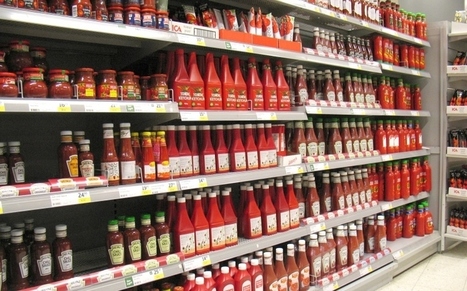




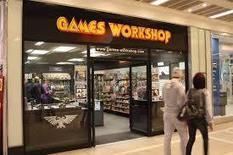




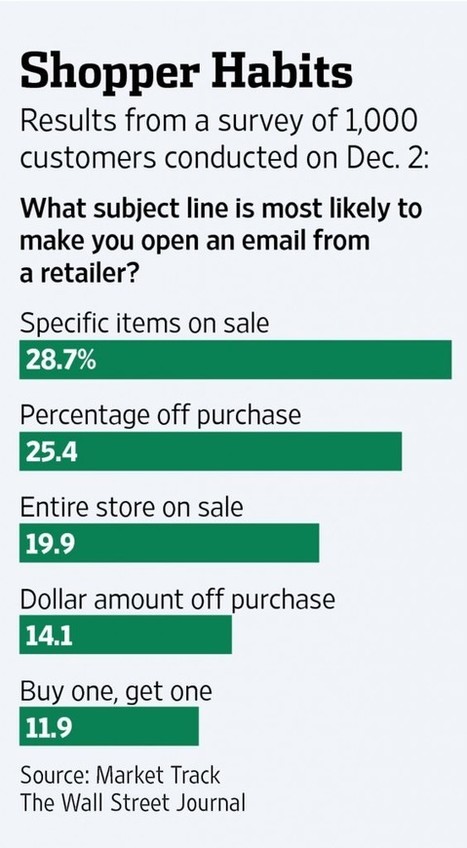




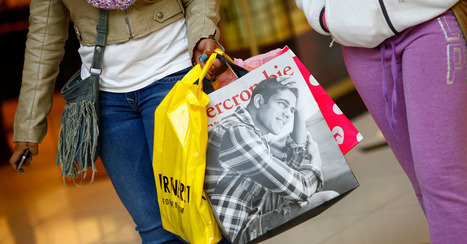

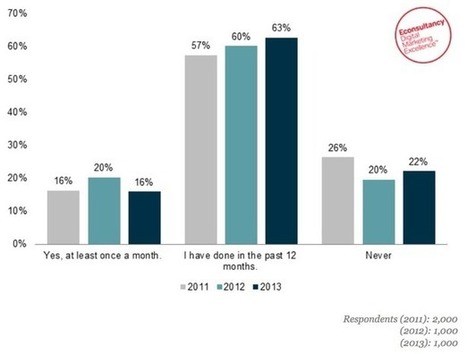





You must listen your customers...